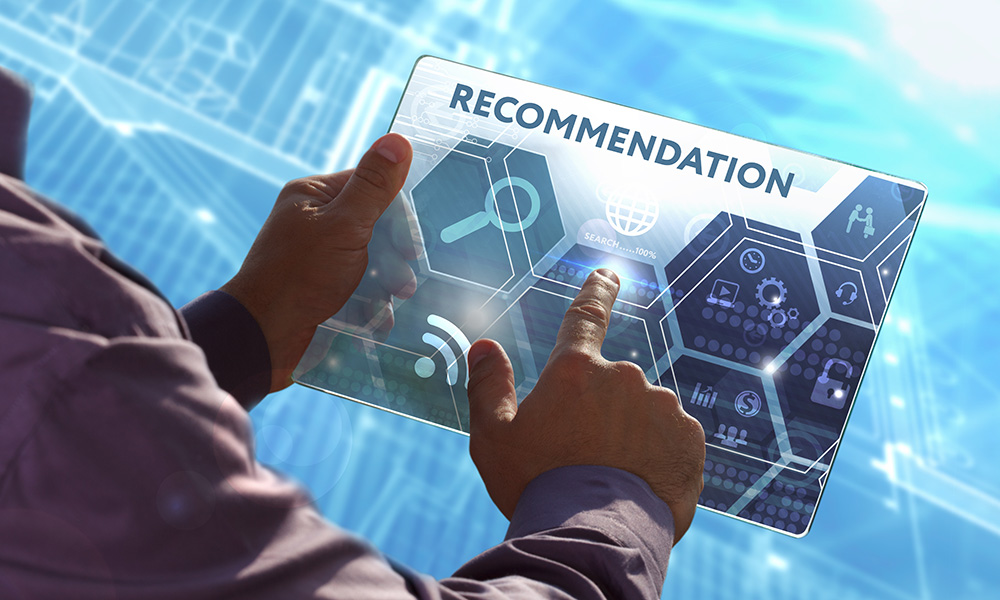What Is Content Personalization? How Do You Implement It?

Pretty much everything we do today is, in a sense, personalized. The posts and ads we see on our social media feeds, recommendations we get from e-commerce shops, and even the shows and movies we stream daily are results of providers’ content personalization efforts. And there’s a reason for that—close to a third of the world’s consumers only engage with personalized messaging. But what is content personalization? And how can your company implement it? This post answers those questions and more.
What Is Content Personalization?
Content personalization refers to creating unique, relevant, and customized content for a specific audience. In marketing, content personalization helps improve campaigns, increase conversion rates, and grow engagement.
Simply put, therefore, content personalization means tailoring content for specific customers based on their profiles or preferences. Past purchases, personal preferences, favorite brands, frequently watched genres, and online behaviors all play a part in personalizing content.
Why Personalize Content?
Today, consumers already expect personalization to be part of their online experience. They don’t want to be overwhelmed with tons of options. They no longer want to waste time scouring through the Web to find the products and services that fit their needs. Instead of doing that, they would rather be fed handpicked suggestions based on their previous dealings with brands.
Content personalization helps consumers avoid “choice overload,” a term Alvin Toffler coined in his book Future Shock. He said choice overload can either leave consumers dissatisfied with their choices or “buyer’s remorse” or cause behavioral paralysis, leaving them undecided or not making a choice at all.
The same is true when people are asked to answer surveys. The more options respondents are given, the less likely they are to choose. An example would be a Columbia University Business School study that compared how many people responded when they were given two versus 59 choices. When offered two options, 75% of the respondents participated while only 60% did so when given 59 choices.
In sum, apart from meeting consumer expectations, content personalization is critical to help customers avoid choice overload.

5 Content Personalization Examples You Can Emulate
Many if not all companies that offer several product varieties implement content personalization. Some, however, are more successful than others. Here are five brands your company can learn from.
1. Adidas
Adidas launched its mobile app backed by Salesforce to add a personal touch to consumers’ shopping experiences in 2017. The app is a duplicate of the brand’s online store but comes with custom features like a news feed showing tailor-fit video content and articles, customized product recommendations, a service chatbot, a wishlist, a curated gift guide, and more. It also learns more about users when used. Built with artificial intelligence (AI) capabilities, the app learns from consumers’ behaviors and interactions with the brand across all its digital touchpoints (i.e., website, social media, etc.).
2. Apple
Apple introduced App Store personalization at the end of 2018 to identify the most relevant apps to individual users. The brand began showing customized lists for various store areas and added a list at the bottom of each App Store page that suggests games and apps users may like. The suggestions depend on factors, such as install history and the search terms consumers use.
3. Netflix
Different shows for different folks probably describes what Netflix does. The service always offers personalized recommendations, helping subscribers find shows and movies they may like. To do that, Netflix tracks subscriber interactions (e.g., viewing and rating history), the preferences of other members with similar tastes, and show/movie information (e.g., genres, actors, etc.). Not only that, the provider also looks at the time of day people watch, what devices they use, and how long they stay glued to their TVs.
4. Amazon
Amazon is probably a pioneer when it comes to content personalization. It has been mining and using consumer data to create more personalized e-commerce experiences. But since it’s no longer the only one doing that, these days Amazon has begun extending its personalization efforts to its sellers, which is another way they can improve consumer experiences. In essence, the company has been helping sellers answer questions like: What can we do to improve our business? How can we manage our inventory better? What products should we add? How can we serve our customers better? All the answers to these questions, of course, have to do with content personalization.
5. Facebook
You may not know it, but all the actions you perform on Facebook (e.g., following a page or liking a post) contribute to personalizing your experience, including the ads you see. Many businesses also send the social network information about user actions. All this information makes for the more relevant content you see on the site every day.
How to Implement Content Personalization
As you’ve seen from the examples, content personalization isn’t possible without data. The information that users consent to provide (i.e., by agreeing to privacy policies and allowing cookies) and businesses share with sites and apps make for more personal online experiences. But companies can approach content personalization in various ways. It all depends on their business requirements and goals. Here are five content personalization types.
1. Customize Based on Vertical
An easy way to segment customers is by looking at their vertical or industry. You can identify a company’s needs by identifying the sector it belongs to. If you’re an app developer, for instance, you would know that an organization in the retail sector would most likely need an e-commerce app. That said, you can customize the content of your newsletter or ads geared toward it to highlight your e-commerce app development capabilities and provide a portfolio largely made up of the apps you’ve created for the space.
From a resource standpoint, segment-specific content is highly scalable as it can be relevant to a large audience.
2. Customize Based on Location
Apart from segmenting consumers by vertical, you can also opt to split them by geographic location. Doing that can help companies craft campaigns (e.g., sales, promotions, and discounts) targeting customers in different areas. You can then cater to their specific season- or holiday-related needs. Some countries have only two seasons instead of four. Winter in Australia and the U.S. occur at different times of the year. Thanksgiving in Canada and the U.S. are celebrated on varied dates, too. All those scenarios can be addressed by content personalization through geolocation.
3. Consider Using Personas
Many companies highlight the need to establish buyer personas because the strategy works. Creating persona-specific content means personalizing to be very relevant to a specific group of buyers. That requires knowing who your buyers are, what problems they encounter, and what motivates them then ensuring they can relate to your content meaningfully could be the way to go.
4. Identify Consumers’ Buying Stages
Stage-specific content, which tells you where consumers are in the buying process, helps you identify their pain points. You can address these issues, which should, hopefully, push them toward the next stage until they finally complete the purchase.
Content strategies that can help you nudge consumers to take the next step include sending encouraging emails, publishing technical information to answer questions, posting case studies, and sharing competitor comparison articles.
5. Cater to Specific Prospects
Running account-based marketing campaigns requires account-specific content. That means creating content tailor-made for an organization you’re targeting. An example would be a presentation for key decision makers within that company that shows them why you’re the best vendor to go with. Custom landing pages for various organization types are also common examples of account-specific content.
---
Whatever your reason for content personalization is, know that its benefits (e.g., increasing customers’ likelihood to buy products, improving brand reputation, etc.) greatly outweigh the costs. Much like any content can be customized to fit a specific target audience, many content personalization strategies can be adjusted to a company’s needs and resources.
